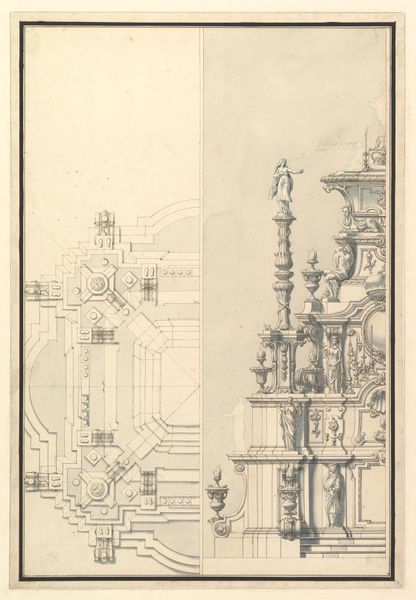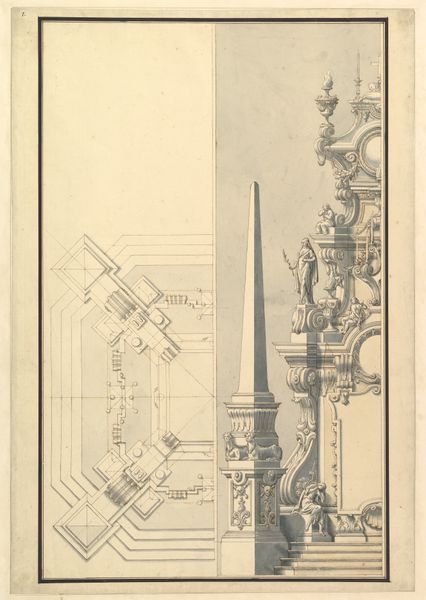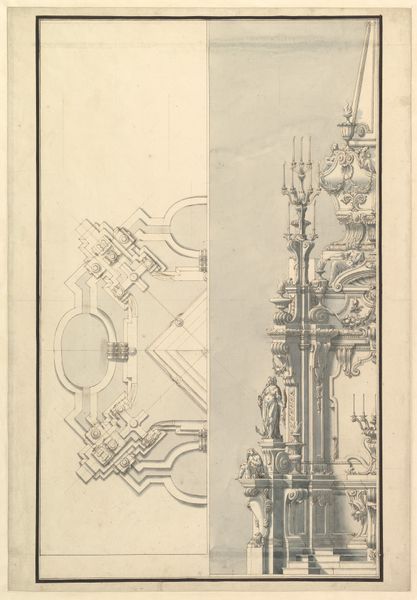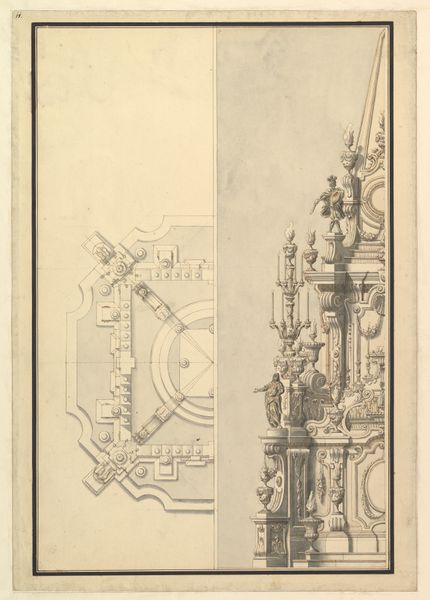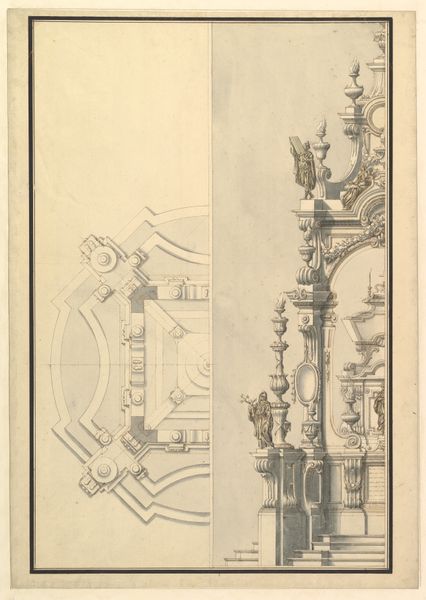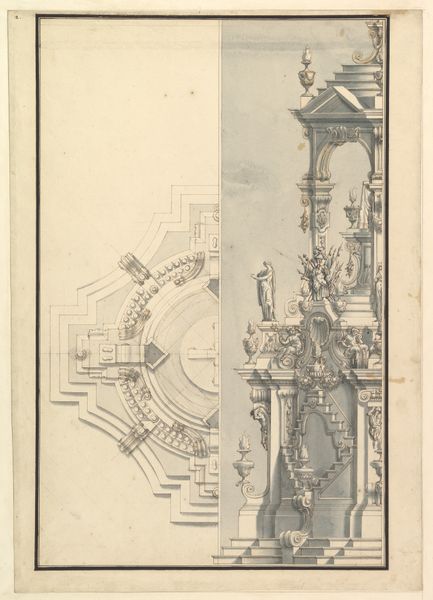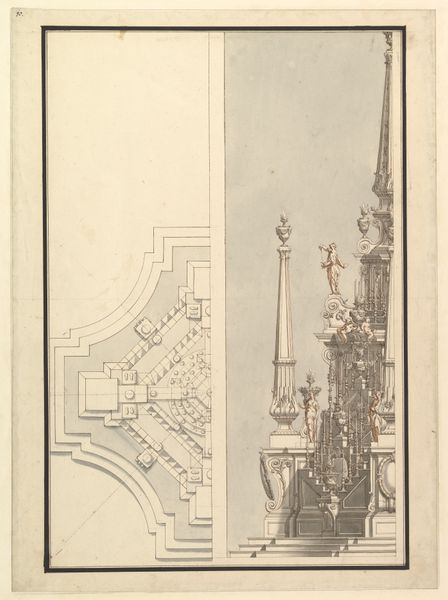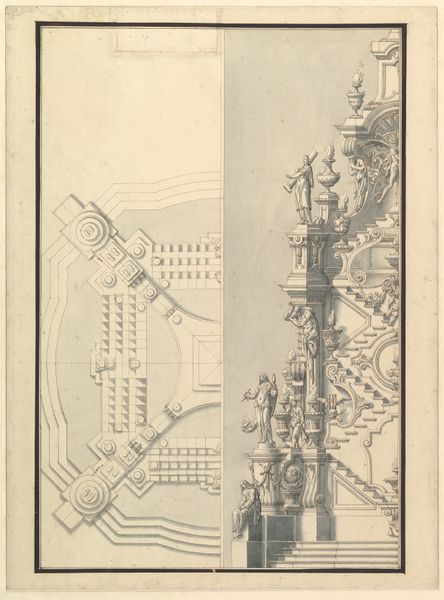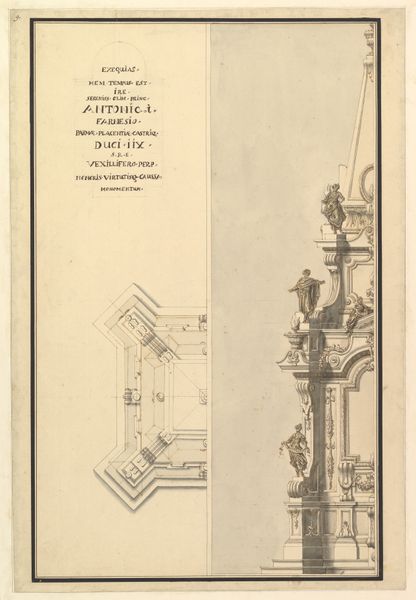
Half Ground Plan and Half Elevation of a Catafalque for Cosimo III dei Medici, Grand Duke of Tuscany (1642-1723) 1696 - 1756
drawing, print, architecture
drawing
narrative-art
baroque
geometric
architecture
Dimensions: 19-7/8 x 13-7/8 in. (50.5 x 35.2 cm)
Copyright: Public Domain
Curator: Here we have Giuseppe Galli Bibiena's "Half Ground Plan and Half Elevation of a Catafalque for Cosimo III dei Medici, Grand Duke of Tuscany (1642-1723)," likely rendered between 1696 and 1756. Editor: Wow. It strikes me as half blueprint, half fever dream. So architectural, yet incredibly ornate, almost suffocating. Curator: Bibiena was a master of Baroque theatrical design, so he specialized in precisely this blend of precision and flamboyant spectacle. He really had a knack for those drawings. The geometric accuracy suggests real, buildable structures, while the profusion of ornament tips into the surreal. Editor: That division of the artwork—that clear split—is fascinating. On one side, we have cool geometry and rationality, almost like a map or a scientific diagram. And on the other, a monument teeming with sculptures and obelisks practically gasping for air. Is the contrast significant? Curator: Absolutely. This diptych arrangement shows both the objective calculation *and* the emotive display inherent in memorial architecture. It is a plan for mourning and memory. The catafalque itself, that elevated platform for the deceased, is rendered as a stage for grief, heavy with the symbolism of power. The symbols! So fascinating how the ephemeral, like mourning, is here grounded in very solid geometry. Editor: Are the obelisks traditional symbols, or were those employed for Medici’s memorial? Because those strike me as the type of signifiers we might expect for remembering emperors, for example. Curator: Bibiena is leaning on obelisks as a link to ancient authority and the supposed immortality of great rulers. But there are more specific allusions woven in, such as the Medici coat of arms that grounds it within a particular lineage, the vases aflame with an eternal flame, which add an intense emotional tenor that is also tied into the symbols used in their heraldry. I really see this piece as evidence of his understanding of architecture and semiotics. Editor: Yes! He captures something essential about ritual. Seeing this almost blueprint on the one side paired with that florid vision is… revealing. So human. The cold geometry gives way to, what? An acknowledgment of feeling? Curator: Precisely. I now see Bibiena inviting us to understand the controlled explosion of emotion. He's saying that even in structured grief, feeling finds its way into form.
Comments
No comments
Be the first to comment and join the conversation on the ultimate creative platform.
